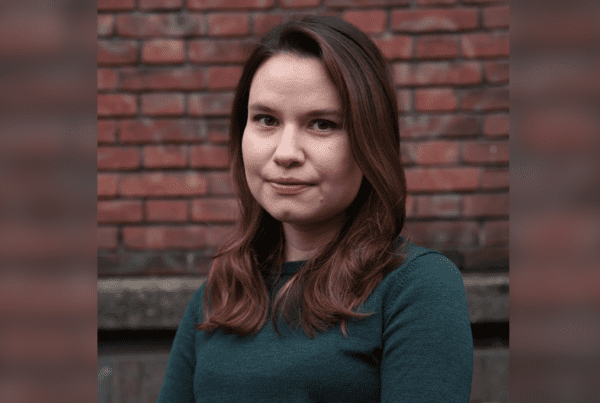In Sisters in Hate, you discuss the “soft power” that women bring to the hate movement. What are the different ways women’s soft power contributes to the hate movement and white supremacy? And how does women’s involvement help reproduce the social order of these groups?
White women play many roles in the hate movement, and a key one is helping make the scene and its ideas seem righteous and palatable, even innocuous. As symbols and as leaders, white women are vessels for delivering the lie that white supremacy isn’t only, if at all, about violence and marginalizing people who don’t agree with the movement; it’s about family values, tradition, and caring for one’s own. Their presence screams: If “nice white women”—daughters, mothers, sisters—are involved, how bad can it be? This is a façade, but a powerful one. Women are also necessary for the hate movement’s societal aims, most importantly white, heterosexual marriage and procreation. Without them, the social order that the movement espouses could not exist. Hate cannot survive on men alone.
There is a very long history regarding the desire to control women sexuality. How does this play into women’s roles in reactionary movements?
Bear with me while I explain some mental gymnastics: The hate movement is a hyper-sexist space, where women are seen as the physically and analytically “weaker sex,” and where violence against women isn’t uncommon. But it is also a space where sexism is manipulated into a virtue, where women are told that being wives and mothers is their biological and racial destiny. Not only that, in embracing these roles, they’re told that they are uniquely positioned to “save” the white race from annihilation. Put another way, white nationalism pretends that being a wife and mother at the expense of all else is glorifying, political, and a matter of societal survival. By ultimately doing little, and living comfortably within those restrictions, women in the hate movement are told they are doing the utmost. Their wombs may be tools, sure, but for the propagation and protection of a superior race of humans. What kind of woman, white nationalists ask, wouldn’t want to play their part in building a better future with their bodies?
The three women who are the main ‘actors’ of your book had, or have, significant online presences. The internet offers those in the hate movement a significant organizing and radicalizing tool. How do white supremacist women use the internet? Is that different to how men use it? What are ways that policymakers and activists can respond to the pernicious use of the internet by white supremacists?
I hesitate to generalize too much about online trends, because they are ever-shifting as technology evolves, platforms rise and fall, and racist influencers find safe haven in different pockets of the internet. Still, I think it’s fair to say that white-nationalist women tend to use the internet to promote hateful ideas under the glossy veneer of white femininity. They project a sense of normalcy and palatability to their followers, and invite other white women watching/listening to join them, be like them, partake in a sisterhood. What they have is attainable, they insist—the power, the beauty, the friendship—if you say and do the right, racist things. And going a step further, once you’re in the fold, you will find a platform for saying and doing things for the good of a whole race, your race, and for supporting the warriors fighting (that is, committing racist violence) to protect your well-being. I think often of what Lana Lokteff, one of the subjects in my book, said in a 2017 speech: “A soft woman saying hard things can create repercussions throughout society. Since we aren’t physically intimidating, we can get away with saying big things.”
White-nationalist women tend to use the internet to promote hateful ideas under the glossy veneer of white femininity. They project a sense of normalcy and palatability to their followers, and invite other white women watching/listening to join them, be like them, partake in a sisterhood.
Tackling the internet’s role in propagating hate is important, of course, and it starts with tech companies putting ethics over profit, reining in hate speech, and countering disinformation far more robustly than they are now. But the internet didn’t create white supremacy. It’s just the latest vehicle for the ideology’s promulgation. Tackling hate requires comprehensive action by government institutions, private entities, and individuals. For lack of a better word, it requires getting interdisciplinary about the problem, involving every sphere and sector in this country, from schools to tech companies to the halls of Congress.
These three women have a connection to religion and rituals of different kinds whether it is an embrace of Christian-inspired “TradLife” or a rejection of Christianity in favor of Nordic paganism. How does the promise of Christian kindness play into both explicit and implicit racism? And do you see any connection between people’s need for ritual and the appeal of white supremacy?
If American history tells us anything, it’s that Christian kindness is a useful cover for hateful ideas. We’ve seen religious leaders, churches, believers, and entire faiths espouse racism in the name of God. But cruelty is still cruelty if it’s delivered with a smile and a blessing, or justified in the name of the divine.
There is absolutely a connection between people’s need for ritual and the appeal of white supremacy. It’s hard to witness, say, the people in Charlottesville carrying lit tiki torches and chanting in unison, with fervor on their faces, and not think that public ritual is utterly integral to the movement. The hate movement is filled with people who want to simultaneously feel empowered and as if they’re part of something bigger than themselves. It’s rife with performance, symbols, even costumes, KKK robes and hoods being the most obvious example. Even the worst acts of violence are theater of a kind, intended to signal the depth of one’s commitment and to inspire other believers. Hate is a social bond. It demands an audience.
Even the worst acts of violence are theater of a kind, intended to signal the depth of one’s commitment and to inspire other believers. Hate is a social bond. It demands an audience.
You quote one of your subjects, Lana Lokteff, towards the end of the book as she says, “When women get involved a movement becomes a serious threat.” Can you talk about how this rings true in the post-January 6 world? You mention that discussing women in the hate movement is somewhat of a taboo. How can we overcome this taboo to appropriately address the problem?
Women are often written out of history, and the history of hate in America is no exception. The idea that white supremacy is mostly a bastion of “angry white men” is false. Just because they aren’t the ones picking up assault rifles and massacring people of color—and, look, that can happen—doesn’t mean white women aren’t sustaining features of hate in America. To assume otherwise is to be in denial about hundreds of years of history, in which white women have done terrible things in the name of whiteness. It is to ignore the fact that women participated in the January 6 coup attempt, as boots on the ground, as organizers, and as funders. We overcome this gap in the discourse by adopting a more nuanced, accurate understanding of white supremacy and what it requires to flourish, and by using that understanding to guide media coverage, policymaking, and so much more.
Seyward Darby is the editor in chief of The Atavist Magazine. She previously served as the deputy editor of Foreign Policy and the online editor and assistant managing editor of The New Republic. As a writer, she has contributed to The New York Times, The Atlantic, The Washington Post, Elle, and Vanity Fair, among other publications. She is the author of Sisters in Hate: American Women on the Front Lines of White Nationalism (Little, Brown, 2020)







